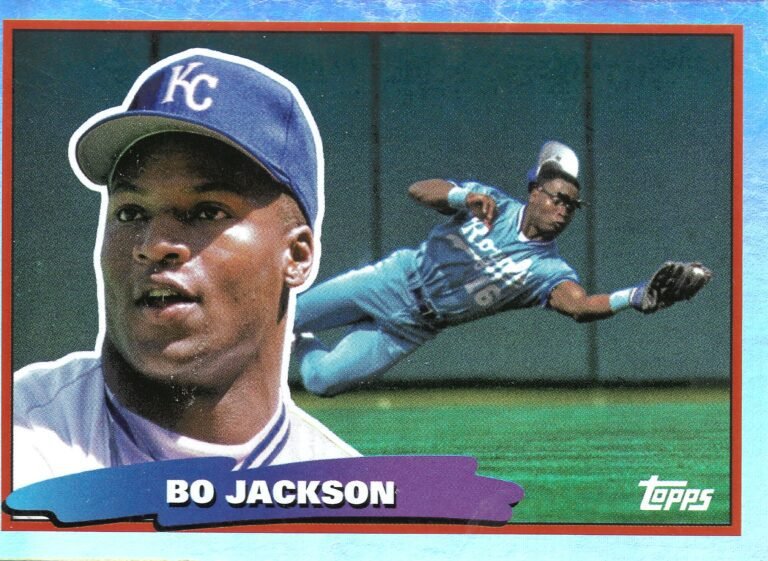CGC Card Grading: Authenticate & Protect Your Collectibles
Collecting cards has always been an exciting hobby for many, but it also carries significant financial and emotional value for those passionate about it. Whether you’re into trading cards, sports cards, or non-sports cards, ensuring the authenticity and condition of your collection is essential. That’s where CGC (Certified Guaranty Company) card grading comes in.
As a collector, you want to protect your investments, increase their value, and ensure authenticity. CGC offers expert grading services, providing peace of mind when buying, selling, or trading cards. In this guide, I’ll take you through everything you need to know about CGC Card Grading, from submission to understanding the grading scale, and why it’s worth considering for your card collection.
What is CGC Card Grading?
CGC is a third-party grading service specializing in authenticating, grading, and encapsulating collectible cards. They cover various types of cards, such as trading card games (TCGs), sports cards, and non-sports cards. CGC’s goal is to provide expert insight into the authenticity and condition of your cards, making it easier to determine their value and protect them for the future.
Why Choose CGC for Card Grading?
When you want to ensure that your valuable cards are preserved and authenticated, CGC is a trusted name in the industry. With their expertise and state-of-the-art technology, CGC has established itself as a go-to service for card collectors worldwide.
Key Features of CGC Grading
- Authentication: They verify the authenticity of each card to protect collectors from fakes.
- Grading Expertise: Their experts meticulously assess cards for condition and quality.
- Encapsulation: Cards are sealed in tamper-proof, durable holders that preserve the card’s condition.

The Grading Process
CGC’s grading process is thorough and transparent, giving you confidence that your cards are being treated with care. The steps involve:
1. Submission
To start, you’ll need to submit your cards to CGC for grading. You can do this by either sending your cards via mail or through one of CGC’s authorized partners. When submitting, you’ll need to include details about the cards, such as their type, the set they belong to, and their condition.
2. Inspection
Once your cards reach CGC, their experts carefully inspect each card to verify its authenticity. During this process, they look for signs of tampering, counterfeiting, or any alterations that could affect the card’s value. This stage is crucial because counterfeit cards can devalue an entire collection.
3. Grading
After inspection, the card is graded on a numerical scale. This is where CGC’s expertise comes into play. They use a meticulous grading scale to assess every aspect of the card, from its centering and corners to the edges and surface.
4. Encapsulation
Once the card receives its grade, it is sealed in a tamper-proof plastic case. This encapsulation process protects the card from damage, environmental factors, and wear and tear. The case also includes a label that displays the card’s grade and details, adding another layer of professionalism to your collection.
the CGC Grading Scale
CGC uses a rigorous numerical grading scale to assess the condition of cards. Understanding this scale will help you better evaluate the condition of your collection and its market value.
Gem Mint 10
- Condition: Perfect condition, no flaws or imperfections.
- Value: This is the highest grade a card can receive, making it extremely valuable. Cards graded at Gem Mint 10 are highly sought after by collectors and investors alike.
Pristine 9
- Condition: Near-perfect condition with only one or two minor imperfections that are almost unnoticeable.
- Value: Cards graded Pristine 9 still hold a significant value in the market due to their exceptional condition.
Near Mint 8
- Condition: Excellent condition, but with a few noticeable flaws such as slightly rounded corners or minor surface scratches.
- Value: Near Mint 8 cards are still in great shape and can command a high price, but they are not considered perfect.
Mint 7
- Condition: Very good condition with noticeable flaws like more pronounced edge wear or minor surface imperfections.
- Value: Mint 7 cards remain desirable, but the visible flaws do reduce their market value compared to higher-graded cards.
Excellent 6
- Condition: Good condition, but with more significant flaws such as larger scratches, off-centering, or minor surface damage.
- Value: Excellent 6 cards are great for casual collectors, but their imperfections will reduce their overall market price.
Very Good 5
- Condition: Fair condition with many noticeable flaws, including damage to corners and edges, or even minor creases.
- Value: These cards are more affordable and accessible for beginners, but they won’t hold much value in high-end markets.
Good 4
- Condition: Poor condition, with multiple flaws including visible creases, scratches, and damaged edges.
- Value: Good 4 cards are ideal for entry-level collectors or those who prioritize ownership over condition.
Fair 3
- Condition: Very poor condition with severe damage, such as multiple creases, tears, or discoloration.
- Value: Cards in this condition are mainly kept for sentimental value or historical significance, as they won’t fetch high prices in the market.
Poor 2
- Condition: Extremely poor condition with significant damage, tears, and discoloration.
- Value: These cards are typically unplayable and only hold value for collectors of rare or vintage items.
Very Poor 1
- Condition: Unplayable and heavily damaged. This is the lowest grade a card can receive.
- Value: Cards graded Very Poor 1 are only of interest to collectors for their rarity or historical importance.
Benefits of CGC Grading
So, why should you go through the effort and cost of grading your cards with CGC? Here are some compelling reasons:
Authentication
One of the primary benefits of CGC grading is the assurance that your card is authentic. The collecting world is filled with counterfeits, and CGC’s experts ensure that your card is the real deal. This is especially important for high-value or rare cards.
Condition Assessment
The grading process gives an objective assessment of your card’s condition. When buying or selling cards, knowing their exact grade can be the difference between closing a deal or losing a sale. CGC’s strict grading standards are trusted by collectors and buyers alike.
Preservation
Encapsulation doesn’t just make your card look more professional—it also preserves its condition. The tamper-proof, durable case shields your card from environmental factors, accidental damage, and wear and tear over time. If you have a card that you want to last for years, encapsulation is a must.
Increased Value
Graded cards often command higher prices than ungraded ones. The combination of authentication, a clear grade, and professional encapsulation adds a layer of trust and value in the eyes of buyers. If you’re thinking of selling or trading your cards, getting them graded by CGC can significantly increase their worth.
Investment Potential
For many collectors, their cards are not just a hobby but also an investment. Graded cards, especially those with higher grades, tend to appreciate in value over time. A CGC Gem Mint 10 card, for example, could become a highly valuable asset in the future, making it a smart financial move to grade cards now for potential future gains.
Final Words
CGC card grading offers collectors a reliable and trusted way to authenticate, preserve, and assess the condition of their prized cards. Whether you’re a serious collector or just getting started, grading your cards can increase their value, protect them for the future, and offer you a sense of security when buying or selling cards.
If you’re serious about your collection and want to ensure it’s in the best possible condition for years to come, then CGC card grading is a service you should strongly consider.





